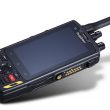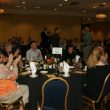Utilities as SMRs: Using simulcast trunking
Replacing its VHF conventional radio system with an advanced wireless communications network allows a public utility to accommodate independent talk groups, reduce congestion and expedite customer service.
Even in the electrical distribution business, you get unexpected “connections.” In early 1993, John Berry, supervisor of radio and cable for the Kansas City, KS, Board of Public Utilities (BPU), called me about the then-proposed Part 88 addition to the FCC rules. That telephone call started the journey toward developing our new trunked radio system.
The thrust of the FCC proposals meant that an already-taxed radio system would face even more stringent operating requirements. The BPU serves about 65,000 electric customers and 57,000 water customers over a 125-square-mile metropolitan area. The BPU had already suffered from relatively heavy radio traffic on several of its assigned VHF and UHF channels. The FCC’s proposed rule changes would require all land mobile users in the VHF and UHF frequency bands to use equipment that operates on a narrower bandwidth with restricted output power. Two 50% reductions in bandwidth were proposed, so that eventually 25kHz of bandwidth would be reduced to 6kHz. [These changes, originally proposed as a new Part 88, have been incorporated into recent “refarming” decisions affecting Part 90 of the FCC rules.] To meet these requirements, all of BPU’s VHF and UHF equipment would have to be replaced. Additionally, the coverage area would suffer.
With the concurrence of Anthony Pike, manager of Electric Operations at the BPU, Black and Veach Engineering of Kansas City, MO, was commissioned to study the existing radio system, the requirements for a trunked radio system and the functional specification for a trunked radio system.
Traffic control Moving some traffic from heavily loaded channels to less busy channels was considered as a possible system solution. The channels available were used for semi-private conversations between supervisors. Sharing with other users would abrogate these private communications.
The number of available trunked radio frequencies in October 1993, the date of the Black and Veatch report, was limited. If the BPU waited until the FCC proposal was implemented, the trunking radio option might not be available. In either case, the BPU was subject to costs because of the change. The BPU opted to go forward with implementation of a trunked radio system. In hindsight, this was a fortuitous decision, as trunked radio frequencies for the utility band in the Kansas City area were no longer available after 1995.
Trunking radio takes several frequencies or channels and pools them so that maximum use can be made of the available channels. Functional elements of the business entity, in this case the BPU, are assigned talk groups. When a member of a talk group wishes to communicate, access to a non-busy channel is assigned once the transmit button on the radio is depressed. Through computer control and the control channel, all other members of the talk group are assigned to the same channel. No waiting takes place, and all the channels are more efficiently used.
Contrast this with a conventional radio system, where channels are assigned to a functional group. A conversation on one functional group channel makes it busy to other users in that group. Whereas other channels assigned to other groups may be idle, the user must wait until the functional group channel becomes free before a communication can be initiated.
The BPU system design included use of two existing sites at 11th and Steele streets and 110th and State streets, as shown in Figure 1 on page 12. These two sites are situated at the east and west extremes of the BPU service territory. A third site at 27th and Vernon was required for central and river industrial park coverage. A simulcast system with seven radio frequencies, one as a control channel, would provide adequate service. The central controller would be placed at the BPU Service Center, centrally located in our service territory. Consoles would be located at the BPU Energy Control Center, Waters Operations Center and the Service Center, the latter divided between our trouble board operation and meter reading. Microwave radio would be used for communication links to the remote radio sites and remote console location (Water Operations). With a proposed budget approval in 1994, project completion was projected for mid-1996.
Design decisions As the detail design of the system progressed, the BPU was challenged with a number of service decisions. The conventional radio system had provided paging to about 150 users. Paging was accomplished through a dispatcher, rather than by direct access via the telephone system. Paging via the trunked system was deleted because direct telephone access paging was more economical and exceeded operational needs. All users were converted to the telephone paging system.
Supervisors and other designated personnel had been authorized for telephone interconnect services on the conventional radio system. This feature permitted supervisory personnel to make telephone calls through their radios and to reach suppliers, non-radio-equipped office personnel and employees during emergency situations while off duty. These same people had been issued cellular telephones during the Midwest flood of 1993 to accommodate communications during that emergency. After comparing the cost of full-interconnect to cellular use, and considering the possible tie-up of the trunked radio system because of telephone interconnect users, this option was also deleted. Only the BPU radio maintenance personnel would have the telephone interconnect capability.
Data transmission on the trunked radio system was also desired. However, the BPU was not prepared to source-transmit the desired information (i.e., trouble tickets, connects/disconnects, maps, etc.) at the time the radio system was to be implemented. The compromise was to purchase the radio equipment data-ready.
The design required a new radio building and tower location adjacent to the service center. As the design progressed, costs were identified to interface console communications between the Service Center Trouble Board Dispatch Center and the new radio building. Transition plans from the old dispatch center (two rooms) to a more functional dispatch area were developed. The new dispatch area was assigned an area adjacent to the existing center. Space designated as the troubleman ready room was to be remodeled for this function. Coincident with these requirements, the desire to develop more office space in the Service Center surfaced. After development of an economic analysis, which encompassed the cost of office space, the cost of extending circuits and the cost of expanding the radio building, the option to increase the radio building for a dispatch area was the winner.
The procurement of the radio system was initiated in early 1994. Separate contracts were issued for a microwave system, a site construction and the trunked radio system.
The microwave system consisted of a 10GHz microwave radio with eight T-1 channels from the new Electric Service Dispatch Center (ESDC) to the three base site transmission points.
The construction contract implemented the one base site at 27th and Vernon and the new ESDC site. Tower construction was also included in the construction work.
The trunked radio system included the purchase of seven radio channels, 12 dispatch consoles, 100 portables and 500 mobiles or desk sets.
In anticipation of future requirements, options were priced with the original requirement. These included: A. A trunked mobile radio system with repeater station compatible with FDMA with no modifications and with analog voice capability. B. A trunked radio system with repeater stations compatible with FDMA with no modifications and with digital voice capability. C. An automatic vehicle location (AVL) system.
Option A added about 1.3% to the contract price with options B and C adding 3.9% and 8.4%, respectively. Option A was originally conceived to provide flexibility in adding channel capacity, given the lack of 800MHz frequencies. FDMA technology was not authorized in the frequency band assigned to utilities. Consideration of future consolidation with Kansas City, KS, government agencies would supply some additional channels. For these reasons, this option was discarded.
The price for options B and C was too high. Subsequently, these options were also eliminated.
In 1995, contracts were awarded to Motorola for the 800MHz Smartnet trunked radio system, Harris Farinon for the microwave system and J.E. Dunn for the construction.
Successful acceptance of the fixed radio portion of the trunked radio system was completed in February 1996. Rollout of mobile and desk sets was completed in six weeks ending in July 1996.
Installation of mobile and portable radios required coordination between many elements of the BPU. Vehicles were moved by BPU personnel, because of liability considerations, to the designated area for radio installation. Old radios were removed and returned to the BPU radio shop. Training of affected crews was required the following workday to assure continued effective communications and operations. This coordination was established through the development of a detailed schedule by Motorola, which listed every vehicle and the date work was to be accomplished.
In-service training A “train the trainer” concept was also established. A small group of individuals from each functional entity of the utility was trained on the equipment. This group in turn trained each of the individuals with new radios.
Information was disseminated through a newsletter, The Radiogram, to all managers, supervisors and the cadre. The newsletter was kept simple, addressing one topic with each issue. The first issues described the system, how it worked and why it was required. Subsequent issues published the rollout schedule for each section. Positive feedback was received from managers in that “At least we know what is going on.”
Talking the talk, walking the walk The radio system has operated successfully. It received its first real trial by fire on Oct. 22, 1996, when the Kansas City area was hit with a freak, early snowstorm that dumped six inches of wet snow on trees still bearing fall leaves. Widespread loss of tree limbs and subsequent disruption of power lines caused a temporary loss of service to an estimated 20,000 customers. We achieved as high as 50% loading of our radio system, with almost no busy periods during the seven-day effort it required to return the electrical grid to normal.
Thank goodness for that telephone call from John Berry!
Coco is director of electrical engineering for the Kansas City, KS, Board of Public Utilities.












